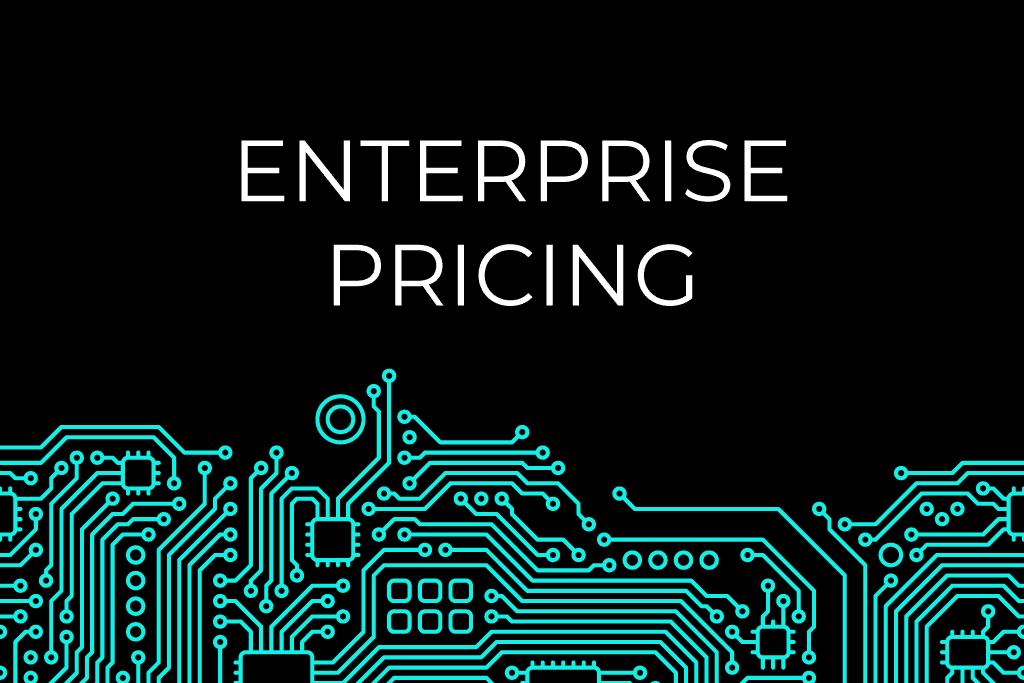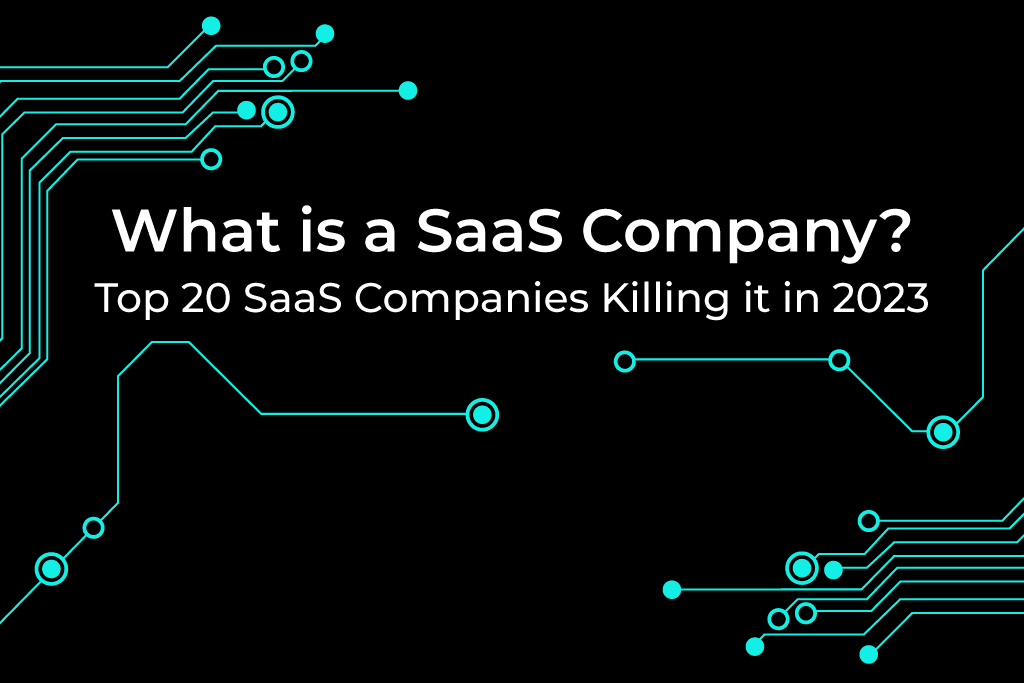35 SaaS product ideas and examples for startup companies in 2023
It’s estimated that the global market for SaaS was worth $167 billion in 2022, and the only way is up, with the total amount spent expected to hit $195 billion before 2023 ends.
There’s been a revolution in how business is done over the past decade, and the SaaS sector is still relatively young. There’s a widespread need for new SaaS ideas and solutions to fill existing and emerging gaps in B2B service provision.
Could your business be the one to launch the next big SaaS success story? If you haven’t considered it before, it’s worth looking at. With the right idea in place, it’s possible to develop a SaaS service that will deliver high returns on your investment in a relatively short period of time.
Of course, finding the right idea can be a challenge. So we’ve put together an explanation of how SaaS works and how to get started on discovering the ideal SaaS concept for your business.
Skip ahead, if you like:
5 Reasons to start up an SaaS company
ow to start a SaaS company: 11 steps
A quick guide on how to find SaaS business ideas
35 Examples of SaaS products and ideas
SaaS ideas to get your creative juices flowing
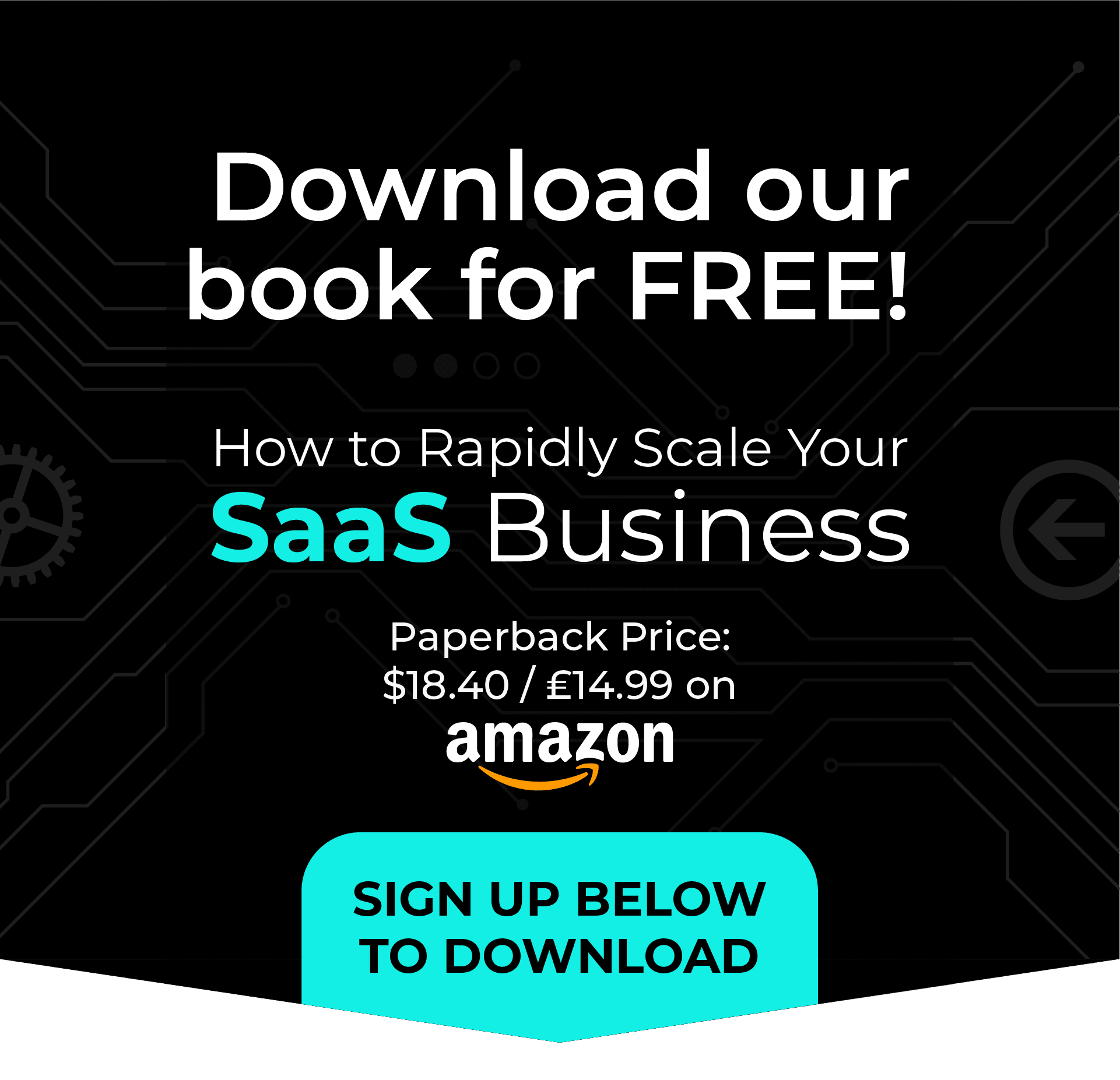
What is SaaS?
SaaS—or Software as a Service—is a term that describes business applications delivered on a subscription basis, making them affordable and flexible enough to suit all budgets.
SaaS is a cloud computing software delivery model that enables data to be accessed from anywhere. A SaaS software vendor hosts and maintains the servers, databases, and code that make up the application.
Types of SaaS companies
There are three main business models when it comes to SaaS companies:
Horizontal SaaS businesses
Horizontal SaaS companies offer a broad-based service that appeals to clients across multiple industries. Examples of this kind of model include QuickBooks accounting software and HubSpot for marketing.
Vertical SaaS businesses
On the other hand, vertical SaaS business models are all about targeting a very specific niche. Think software for dental care professionals, rather than more general healthcare-focused apps.
This is where you tend to find smaller startups, since it’s easier to establish a business that caters for a previously unfilled gap in the market.

Micro-SaaS startups
Micro SaaS businesses are primarily defined by their size. They have only a few employees and generally work in specialized niches, fulfilling one specific function such as SEO keyword analysis.
5 Reasons to start up an SaaS company
There are multiple reasons to opt for a SaaS application model of business including flexibility, ease of deployment, scalability, and a predictable revenue stream.
Let’s look briefly at some of these reasons:
1. Scalability
Cloud-based SaaS allows businesses to expand with ease due to its inherent scalability. Upgrading a SaaS product is simpler than upscaling any other kind of startup company.
2. Lower costs
SaaS is all about software development, so businesses have no need to invest in expensive hardware, which makes a huge difference when it comes to initial development costs.
3. Global access
Demand for SaaS businesses is high due to its extensive reach. Businesses can access SaaS apps from any digital device or location, making it especially convenient for mobile platforms.
4. Easier maintenance
SaaS providers take care of all the necessary software updates and develop new features over time. This means businesses don’t have to invest in significant amounts of downtime.
5. Recurring revenue
As a SaaS solutions provider, you will benefit from regular income—providing you with much-needed stability to ensure the success of your enterprise.
How to start a SaaS company: 11 steps
1. Research a solution for a specific customer problem
When you’re thinking about how to start a SaaS company, the first thing on your mind should be finding that killer idea. That means looking for problems that need solutions. Specifically, it means homing in on an issue that people are willing to pay to have resolved.
Many successful SaaS products started out as solutions to problems their founders had been experiencing themselves. So, if you do have a specific concept along these lines, that’s great!
However, it’s not necessary. There are other ways of discovering good ideas for SaaS products that would be genuinely useful. For example:
- Listening out for professional colleagues complaining about work struggles
- Reading online forums to find out what questions people are asking
- Finding a SaaS niche that already exists but that you could do better
2. Identify your niche
Once you’ve explored various SaaS business ideas, it’s time to identify your niche. This is the exploratory phase, when you begin to dig a little deeper into how you’re actually going to make your project work.
First, take a look at what’s already out there. Study the existing solutions (assuming there are any) and try to identify their weaknesses. What more could your solution deliver for customers that they’re not already getting?
It’s time to hit the forums (or the streets) and ask potential customers what they think. Remember that you’re not trying to please everyone. The point of identifying your niche is to be very specific about who you’re targeting. That way, you can design your product to fill a particular need, and in so doing, find your market.
3. Draft your business plan
At this stage, you’ll only need a very basic business plan. You won’t have enough information yet to develop a full one, but it’s vital to pull together a rough version now before you go any further.

This should include the following sections:
- Strategy – A description of your business, the problem you’re solving and your solution
- Tactics – List your intended sales channels, marketing strategy, and key personnel
- Business model – Outline expected revenue streams and costs
- Schedule – Set out key goals and milestones on a timeline
You can come back to this later and put together a more comprehensive plan. This one’s just to get you moving forward.
4. Validate your SaaS idea
As with all product development, it’s critical to make sure your solution will actually sell. If it won’t, you don’t have a business. Validate your idea using these three steps:
Start with a competitive analysis
First, run a competitive analysis. Do further research on the potential competition, looking at specific product features. Do a detailed analysis of how existing products could be improved.
Get feedback from your target market
Go back to your potential customers and break down their feedback in more depth. Consider exactly which features they would be willing to hand over their hard-earned cash for. The goal is to identify their exact needs so you can build your product around them.
Plan your minimum viable product (MVP)
An MVP is a basic version of your product, like a kind of prototype. Once you have a working model, launch it on a test audience and ask for feedback. Doing this will reveal valuable insights and help you with the next stage of development.
5. Choose a tailor-fitted pricing model
There are a number of successful pricing models for SaaS products, so you should be able to select one that’s a good fit for you. Since the main goal of this kind of business model is to generate ongoing revenue from every paying customer, it’s unlikely you’ll choose a one-off flat fee.\
Instead, you could consider any of these:
- Monthly subscription
- Free trial plus monthly subscription
- Free basic plus paid premium subscription
- Tiered pricing
6. Establish your brand
Your brand is your business personality. It’s not just about visual artwork and logos. It also includes everything that your potential customers see when they connect with you, such as the tone of voice of your messaging.

Many companies in the SaaS industry try to hit the sweet spot of projecting a professional attitude while speaking with a relatively casual tone of voice, which you can see in some of these SaaS content marketing examples. Whether that’s a good choice for you, though, only you can decide.
Partly, it will depend on who your potential customers are. For instance, if you’re targeting large corporations, you may prefer to adopt a more corporate tone.
7. Officialize and make it legal
At this point, it’s time to turn your attention to the legal requirements of setting up your business.
First, consider what business structure you want to use. Think about the potential benefits and drawbacks of each. If it’s likely you’ll be pitching for venture capital to get your business off the ground, for example, going for a C-Corp registered in Delaware will give you instant credibility with potential investors
Another key legal point to consider is whether the product you’re developing needs to meet any specific requirements in law. That can often be overlooked at the beginning of the development process, so it’s a good idea to investigate this in advance to avoid problems later.
8. Explore financing options
It can be difficult self-funding a business idea or bootstrapping it with the help of family and friends—but not impossible. Don’t overlook crowdfunding as an option either; it can work very well, particularly if you already have an engaged community.
If you’re successful, the advantage of doing it this way is that you’ll ultimately retain much more control over your business.
However, it’s not the only approach. Raising funding from angel investors or venture capital providers comes with additional advantages. Working with such knowledgeable partners can help you break into markets that may otherwise have been closed off to you. You can also benefit from taking advice from people much more experienced than you are.
9. Develop your product
You’ve laid the groundwork. Now it’s time to get your product into shape. Start small and make sure that the most important features are as close to perfect as possible.
At this stage, it can be better to keep core development in-house. There may come a time later on when you can bring freelancers into the picture, but to start with, it’s better to have the first iteration of the product developed by people who have a stake in seeing it succeed.
10. Design your main market strategy
How are you going to reach your customers? The modern marketing landscape offers a wide range of options. Often, the best SaaS marketing strategy involves experimenting with several channels at once to see which ones are effective.
If you already have a community interested in your product, that’s the obvious place to start. If you’ve raised funding via crowdfunding, say, you’ll have a ready audience.
You might try to launch your own PR initiative. Build a network of journalists and influencers who report on your niche and give them stories. Don’t be put off approaching well-known individuals; people who publish marketing content are always on the lookout for high-quality copy.
More generally, content marketing is a superb way of reaching new customers. Set up your own company blog and populate it with interesting and informative content, and then reach out to other sites to build backlinks.
11. Identify success metrics
Once you’re up and running, you’ll need to establish some metrics to check regularly in order to monitor performance. Important ones to keep an eye on for SaaS businesses include churn and cost-per-acquisition.
Remember to take full advantage of surveys and other customer feedback possibilities. It’s the only way to stay relevant and keep ahead of the competition.
A quick guide on how to find SaaS business ideas
When starting out, it’s easy to come up with ideas which, while fun, are difficult to put into practice—or turn out not to be something people will pay for.
To find good SaaS business ideas, you need to change your mindset and focus on the following methods to guarantee success:
Method 1: Search and pursue your expert area
It’s always good to start with what you know. Whatever your field of experience, it’s likely you’ve noticed some gaps in existing provision for businesses. This could give you a head start in coming up with the perfect SaaS business ideas.
Method 2: Focus on finding problems
The best examples of SaaS products solve problems. To find those elusive ideas, first find those problems. If you can discover a way to make customers’ lives easier by handing them a solution, you’re halfway there.
Method 3: Pay attention to evolving markets
There are always new opportunities to be had in markets that are going through changes. So it’s worth tracking markets that, say, aren’t fully established online yet in case you can find a way of getting first mover advantage in a developing space.
5 Examples of SaaS ideas and products
This is all well and good in theory, but what does it look like in practice?
Here we bring together 35 SaaS ideas that actually work in the real world: 15 applications that work well on SaaS platforms and 20 companies that have had success with their own SaaS offerings:
15 Examples of SaaS ideas
Let’s take a look at some examples. To start with, here are some broad ideas for getting started:
1. KPI tracking
Demand for KPI SaaS products is huge, since it’s a factor that can significantly impact a company’s performance.
Automated software can bring big benefits in terms of increasing an organization’s productivity and empowering teams with real-time insights on cloud-based dashboards.
2. Team communication
In an increasingly digital-led world, the need for visual data exchange is growing—as is the need for startups in this area.
Team communication tools provide opportunities for effective conversation and collaboration among employees. These types of software tools also encourage better project management and productivity for teams.
3. Designer bookmarks
Designer bookmarks include micro SaaS app Chrome extensions that enable you to bookmark websites, with the app automatically pulling in relevant information from the page source which is stored.
4. Content planner
Content strategy development is a time-consuming process, so the demand for a SaaS product to help is on the increase.
Content planning solutions provide a platform for creating, planning, and analyzing content. These tools also provide marketers with a way to research, optimize, and distribute content.
5. Cloud ERP
Developing a platform-based software solution for HR, planning, and finance departments is a trending—and profitable—SaaS idea. These SaaS products should help to manage accounting tasks and provide analytics, along with improved functionality for companies.
6. Marketing automation
A marketing software management platform can help to automate email, SMS, and social media management.
Marketing automation platforms offer solutions to help with marketing strategy and streamlining workflows, as well as metrics to measure the results of marketing campaigns.
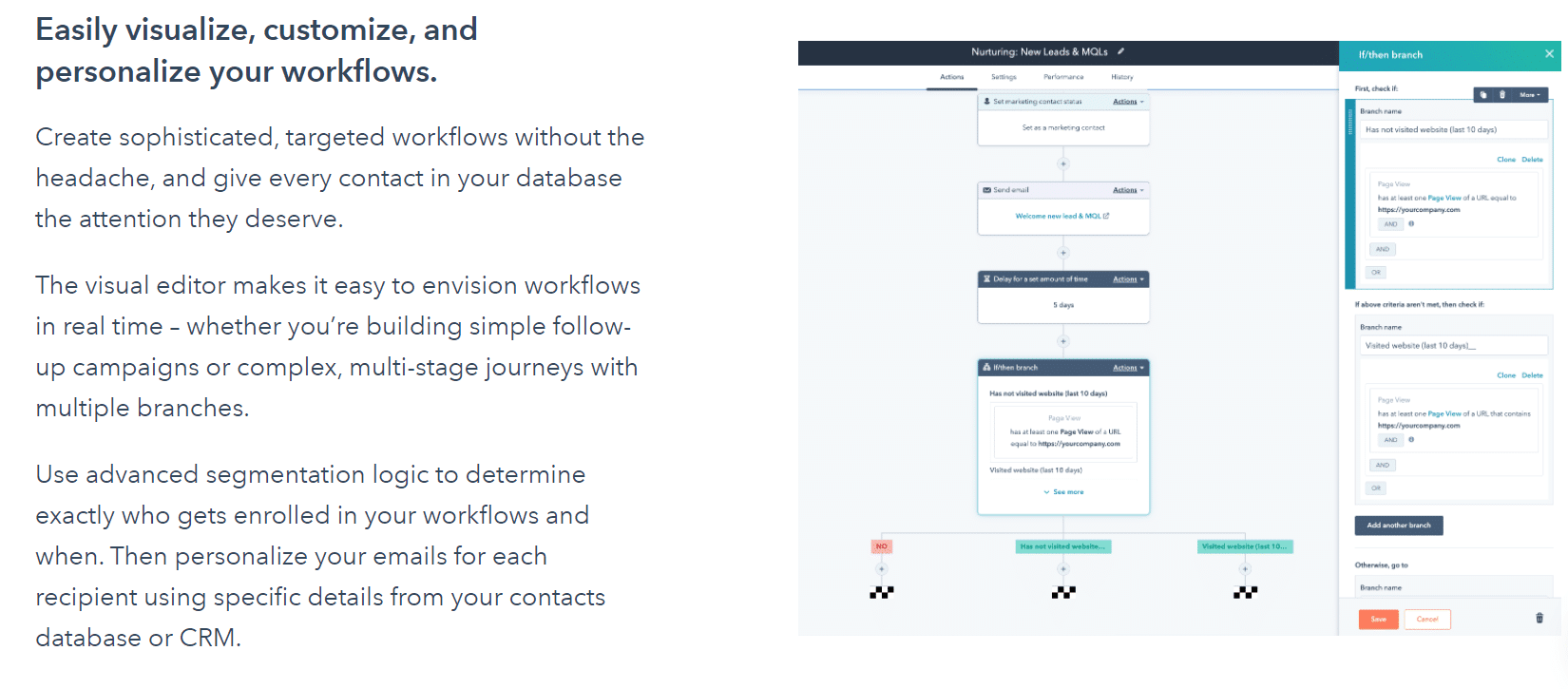
7. Video editing and rendering
Video conferencing has undergone a massive boom over recent years, with real-time video rendering becoming invaluable for boosting a company’s online presence.
It’s a software sector that’s traditionally been led by larger companies like Adobe, though their pricing models are not flexible enough for small companies—meaning it could be a fertile area to target for a startup idea.
8. Telehealthcare
Telemedicine enables healthcare professionals to consult with patients online. It’s already a large market—and one that’s predicted to get even larger, making it an ideal space for startups to move into.
Telehealthcare software brings added convenience and accessibility to both patients and doctors. Examples of SaaS tools in this field include remote patient monitoring and appointment management.
9. Virtual assistants
Virtual assistant software interprets human language and aids engagement with customers.
It’s a growing field that’s waiting for new SaaS entrants to help develop conversational commerce. This type of software can often handle many diverse tasks, from team scheduling and planning to measuring staff engagement.
10. E-invoicing
E-invoicing is, according to Zion Market Research, a software solution that looks set to dominate the accounts payable market.
This startup idea aims to improve management of invoices by accelerating invoice approval, and helping to cut down on fraud. Invoice automation improves accuracy, requires fewer resources, and boosts supplier relationships.
11. CRM for freelancers
There’s a wealth of potentially profitable product ideas in the freelance CRM sector.
On-demand software is very popular with this demographic and offers them a way to track customer interactions and access analytics, email marketing, and reporting tools via intuitive APIs.
12. Post automation for social media
Digital marketing requires social networking—and regular social media posts on all relevant networks—along with a way to monitor that content in order to understand what’s working best.
aaS solutions that can help businesses gather insights and statistics across all platforms is highly valuable for companies, and so is an idea worth considering.
13. In-detail pricing plans
With so many services available for purchase over the internet, and providers changing their prices all the time, finding pricing information for various plans is complex.
This is why a SaaS solution that can elaborate on the pricing of different services is in great demand with consumers.
14. Tech skills
One potentially profitable SaaS idea is to develop an app that enhances tech skills for job seekers.
Companies always need highly skilled people, and if your app can offer applicants a way to boost their credentials, it could take off. There is some competition out there, but still plenty of room for new entrants.
15. OKR tracker
OKR (objectives and key results) tracking software creates alignment around company goals. This is a relatively new SaaS software area and therefore offers good potential for new entrants to the market.
OKR tracking solutions provide reports and enable users to view progress on dashboards, making tracking results visible and measurable.
20 Successful SaaS company examples
Now that we’ve looked at some possible product areas to think about, here are some examples of SaaS companies who’ve taken their ideas to market and become highly successful in their industry sectors.
1. Dialpad
Dialpad provides unified business communications and customer engagement services powered by advanced AI.
Its groundbreaking cloud-based UCaaS (Unified Communications as a Service) platform is based on a SaaS model and empowers businesses with best-in-class telephony, videoconferencing, SMS and chat solutions.

Clients can also take advantage of inbound and outbound customer analytics and sales optimization support.
Dialpad’s AI-based contact center software offers live AI coaching, real-time sentiment tracking, and CRM integration. It also supplies smart tools like voicemail drop for sales calls, live video meeting transcriptions, and automated post-meeting summaries as part of the package. Enterprise customers receive 24/7 support and custom reporting.
2. Global App Testing
Global App Testing is a SaaS company that offers functional web and app testing. The software uses a mix of crowdtesting and intelligent automation to help customers release the highest quality software—wherever they are located in the world.
Users can utilize the expertise of over 50,000 testers and automation tools, so developers can concentrate on fixing the bugs that matter and deliver faster, more predictable releases.
3. Databricks
Databricks was the first ever cloud-based data lakehouse platform, founded back in 2013.
It offers businesses a data architecture solution that takes the best elements of data warehouses and data lakes and combines them.

Unifying the reliability and strong governance of the former with the flexibility and machine learning capacity of the latter, Databricks delivers a unified approach to data management that breaks down data silos
Built on open-source standards, it’s a versatile platform that allows companies to operate more efficiently and innovate more quickly while ensuring that sensitive business data remains completely secure.
4. Sage
Sage has been an illustrious name in accounting software for over 40 years, but it hasn’t rested on its laurels. Its modern SaaS offering is hugely diverse.
Not only does it provide accounting, finance, and payroll support, but also a host of other B2B services. Project and inventory management tools for the construction industry are available, along with CRM, HR, asset, operations, and distribution management services for businesses of all sizes.
Sage offers a wide range of both cloud-based and on-premises or hybrid solutions for companies in pretty much every sector you can think of.
5. AuditBoard
AuditBoard is a global leader in cloud-based audit, risk, ESG, and compliance management.
It offers assessment and compliance auditing, along with IT, operational, enterprise and fraud risk management services to over 1,600 clients located both in the US and internationally.
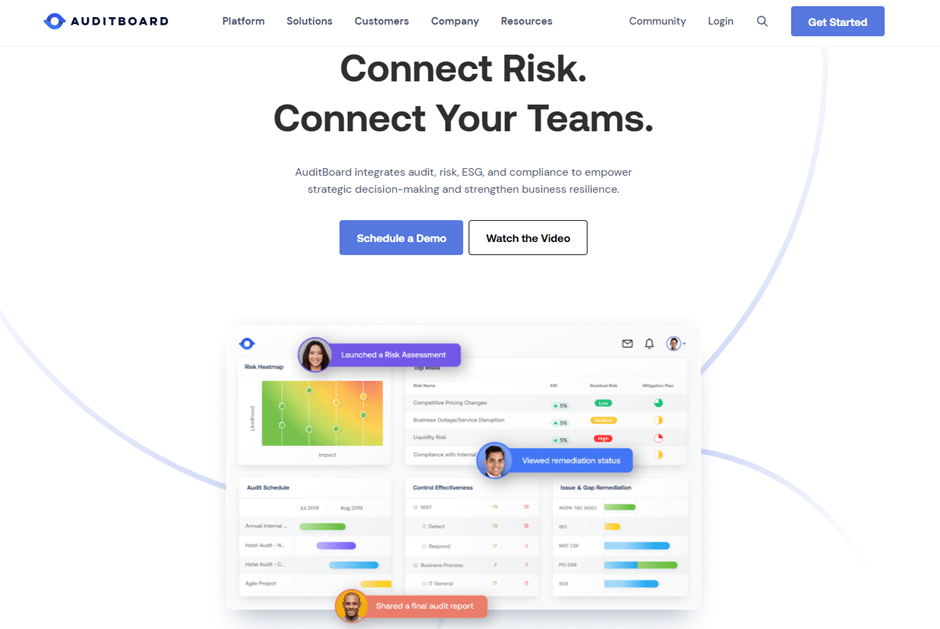
In fact, as many as 35% of all Fortune 500 companies use the AuditBoard platform to successfully manage their way through the complex modern business risk landscape.
AuditBoard’s compliance risk platform enables businesses to streamline their risk management processes. In turn, this helps connect staff so that they’re fully aligned, which frees teams up to work in a more collaborative way.
6. Platform.sh
Platform.sh supplies tech that enables companies to build any website or web app on a fully automated cloud infrastructure. Its aim is to empower businesses to build, run, and scale their applications end-to-end with no need for any re-architecture of existing applications.
As well as hosting services, it provides a huge amount of additional support: Dev tools allowing clients to develop in almost any runtime or framework; 14 different database types with patching and security included; provisioning services that enable one-click deployment of new applications; governance maintenance across all processes, code and infrastructure.
In short, it’s a one-stop shop solution that helps businesses optimize their applications and implement them effectively.
7. Paylocity
Paylocity is a good example of a SaaS platform that was developed because an entrepreneur spotted how a standard element of business software could be brought alive with some additional functionality.
In essence, it provides HR and payroll software tailored to the precise needs of businesses of all sizes. What makes its offering different from the competition is that it’s specifically designed to improve the employee experience.
Its integrated SaaS platform offers an online social collaboration hub that connects employees to each other. Peer recognition and employee survey tools encourage regular staff feedback in real time. It also supplies premium video functionality for more dynamic communication, training and collaboration.
8. Toggl
Toggl is a SaaS-based solution that makes time-tracking easy, and it’s available for individuals and businesses alike.
It enables users to analyze their time, work more efficiently, and access insightful reports—with data from all projects and users combined in one dashboard. Toggl requires no downtime to get started and can be used on desktop or mobile—or inside your preferred apps (with over 100 integrations).
9. Salesforce
Salesforce is the leading SaaS CRM software solution that enables companies to manage and improve their relationships with customers, prospects, and partners in a single platform.
Users benefit from multiple tools designed to help sales teams close deals, increase their productivity, and keep the sales pipeline full of hot leads—without any requirement to invest in expensive software or hardware.
From call center software to self-service communities, Salesforce’s solutions allow for more personalized cross-channel experiences to make customer service more responsive, intuitive, and flexible, so customers get a high quality, faster service.
10. HubSpot
HubSpot is a marketing, sales, and service SaaS software provider designed to help businesses grow. Users can make use of free tools—then upgrade as they require more services.
Hubspot software’s popular features include:
- Lead generation
- Marketing automation
- Analytics
- Advanced CRM
- Meeting scheduling & quotes
11. Shift4Shop
Shift4Shop is an ecommerce SaaS solution that helps retailers to build websites and grow their businesses.
It’s free to get started, and includes a feature-rich website builder, order and product management system, and customer marketing tools. Users can choose from industry-specific templates which are mobile-friendly and customizable.
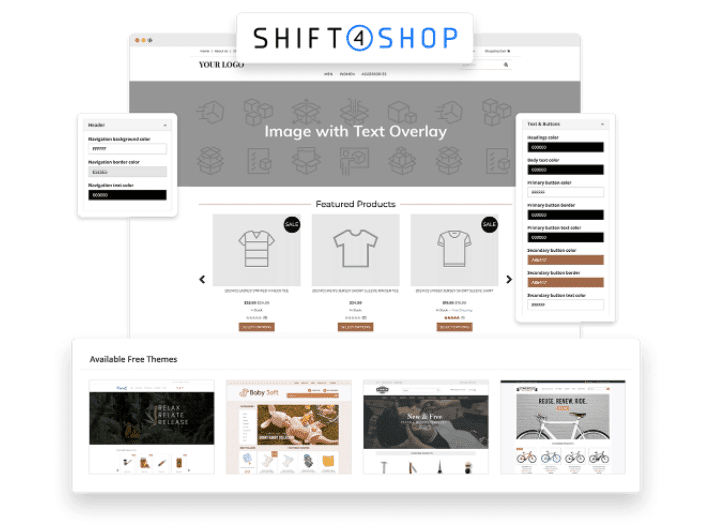
12. Freshservice
Designed for modern businesses, Freshservice is an intelligent service management solution that offers a 21-day free trial.
The SaaS-based software improves agent productivity by providing them with ML (machine learning)-powered suggestions and responses via their channel of choice, whether MS Teams, Slack, or via the Freshservice chatbot.
3. Notion
An all-in-one workspace app, Notion is a SaaS-based tool that enables teams to write, plan, and get organized.
The solution is built to empower teams and solve problems—enabling them to visualize a product roadmap, coordinate releases, and codify processes. Notion sets out to connect everyone and eliminate silos.
14. Lately
Lately is a social media management tool that creates content using the power of AI. The SaaS software can turn videos, podcasts, and blogs into prime social media content, using tech that studies what audiences want to watch, hear, or read.
This means less time needs to be spent writing, with content that is designed to generate high quality leads.
15. Segment
Segment is a leading customer data platform that collects, cleans, and helps companies control their customer data. It gathers events from web and mobile apps and provides every team member with a comprehensive toolkit to enable them to get a single view of customers.
From marketing and products to engineering code, Segment unifies customers’ touch points across all channels and platforms. Users can access analytics, A/B testing, and data warehouse tools and create the perfect data foundation.
16. Calendly
Calendly provides a hub for scheduling meetings and eliminates the need for back-and-forth emails, leaving teams free to get on with their work.
The app enables scheduling for over 200,000 meetings, allowing users to set simple rules and share their links with guests. Customers can set up meetings on days and times that are convenient with others—instantly.
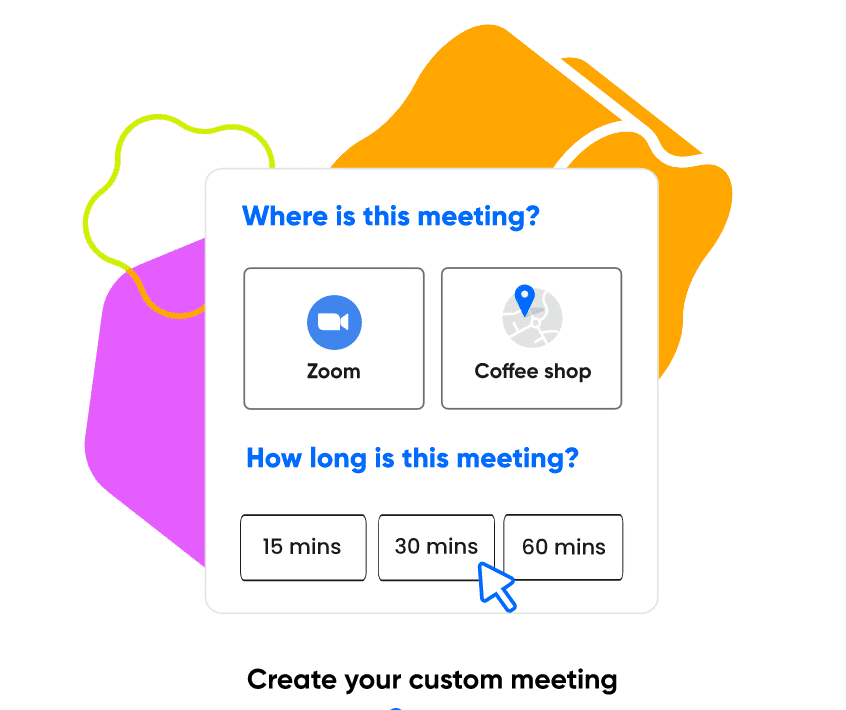
17. Featurespace
Featurespace uses smart technology—based on adaptive behavioral analytics—to enable companies in the financial services industry to solve financial crime.
The SaaS platform can be used on-premises or fully hosted in the cloud in over 180 countries—and models and predicts individual behavior in real-time for fraud prevention and anti-money laundering.
Featurespace is currently used by some of the world’s biggest banks and payment processors.
18. CoSchedule
This calendar management software for marketers helps employees to get more done in less time by organizing all marketing activities in one place.
Team members can see, schedule, and share their marketing with others, using a suite of products to better coordinate projects and processes. CoSchedule is used by 30,000 marketers in over 100 countries and it is included in the Gartner Magic Quadrant for Content Marketing Platforms 2020.
19. TravelPerk
TravelPerk’s core business is providing an all-in-one business travel booking and management platform. It also offers key integrations such as expense management, travel risk, and event management tools. And if you’re looking to burnish your environmental credentials, TravelPerk can even help you offset the carbon emissions from your journeys.
It’s a great example of a SaaS solution that works well because it addresses a common business need in a novel way.
Brightpearl’s software supports operational agility, enabling companies to boost sales, reduce churn, and respond to rapidly changing markets.
Brightpearl’s robust infrastructure centralizes and automates post-purchase operations from inventory and order management to warehousing, fulfillment, shipping, and accounting.
When core operations are optimized, it’s easy to adapt to changes in the marketplace and grow a business. Brightpearl accompanies customers from project scoping to implementation with 24/7 support.
SaaS ideas to get your creative juices flowing
There’s a huge and growing SaaS market due to the many advantages it provides to users. This demand, together with the relative ease of getting a SaaS venture up and running—and potential to grow rapidly with minimal investment—makes this startup model highly attractive.
Before you embark on your SaaS venture, it’s essential to identify a gap in the market for your software product to see where your solution could help to solve an important problem for potential customers.
We hope this post gave you some food for thought—and maybe even sparked an idea that could turn you into the next big SaaS startup success story.
